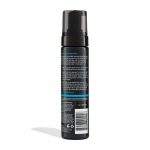Psoriasis is a chronic inflammatory skin condition that affects millions of people worldwide. While there is no cure for psoriasis, there are many treatment options available to help manage symptoms. One of the most promising treatments is light therapy or phototherapy. However, many people wonder if light therapy for psoriasis tans the skin. In this article, we will explore the benefits and risks of light therapy for psoriasis and answer this important question.
Psoriasis is a chronic autoimmune condition affecting the skin that causes red, scaly patches to appear on various parts of the body. One treatment option that has gained popularity in recent years is light therapy, which uses UV radiation to slow the growth of skin cells and reduce inflammation. However, some people wonder whether light therapy for psoriasis can also lead to tanning or darkening of the skin. In this context, this article aims to explore the impact of light therapy on skin pigmentation and provide insights into how to mitigate potential side effects.
Contents
Understanding Psoriasis
Before we delve into the topic of light therapy for psoriasis, it is important to understand the condition itself. Psoriasis is a chronic autoimmune disorder that causes the skin cells to grow too quickly, resulting in the formation of thick, scaly patches on the skin. These patches can be itchy, painful, and embarrassing, and can occur anywhere on the body. Psoriasis is not contagious, and while it may be hereditary, it is not always the case.
What is Light Therapy?
Light therapy, also known as phototherapy, is a non-invasive treatment that uses specific wavelengths of light to treat a variety of skin conditions. It works by exposing the affected skin to ultraviolet (UV) light, which slows down the growth of skin cells and reduces inflammation. There are several types of light therapy for psoriasis, including narrowband UVB, broad-spectrum UVB, and PUVA.
One of the most promising treatments for psoriasis is light therapy or phototherapy, which uses specific wavelengths of light to slow down the growth of skin cells and reduce inflammation. Narrowband UVB therapy is the most common type of light therapy for psoriasis, while broad-spectrum UVB therapy and PUVA therapy can cause some tanning of the skin. While light therapy is generally safe, patients should be aware of the risks and side effects, including burns, skin damage, eye damage, and worsening of psoriasis symptoms.
Narrowband UVB Therapy
Narrowband UVB therapy is the most common type of light therapy for psoriasis. It uses a specific wavelength of UVB light that is effective in slowing down the growth of skin cells and reducing inflammation. Treatment is typically administered two to three times per week, and patients usually see improvements in their symptoms within four to six weeks. The treatment is relatively safe and does not cause tanning of the skin.
Light therapy, also known as phototherapy, is a promising treatment for psoriasis that uses specific wavelengths of light to slow down the growth of skin cells and reduce inflammation. Narrowband UVB therapy is the most common type of light therapy for psoriasis and does not cause tanning of the skin. However, broad-spectrum UVB therapy and PUVA therapy can cause some tanning of the skin. Patients should be aware of the risks and side effects of light therapy for psoriasis, including burns, skin damage, eye damage, and worsening of symptoms. It is important to talk to a doctor about the risks and benefits of light therapy before starting treatment.
Broad-Spectrum UVB Therapy
Broad-spectrum UVB therapy uses a broader range of UVB wavelengths than narrowband UVB therapy. It is typically used for patients with severe psoriasis or those who have not responded to other treatments. Treatment is administered two to three times per week, and patients may need to spend more time under the UVB lights than with narrowband UVB therapy. While broad-spectrum UVB therapy is effective, it can cause some tanning of the skin.
Light therapy for psoriasis is a promising treatment that can help manage symptoms by slowing down the growth of skin cells and reducing inflammation. Narrowband UVB therapy is the most common type of light therapy for psoriasis and does not cause tanning of the skin, while broad-spectrum UVB therapy and PUVA therapy can cause some tanning of the skin. Patients should be aware of the risks and side effects of light therapy, including burns, skin damage, eye damage, and in some cases, the worsening of psoriasis symptoms. Patients should talk to their doctor about the risks and benefits of light therapy for psoriasis before starting treatment.







